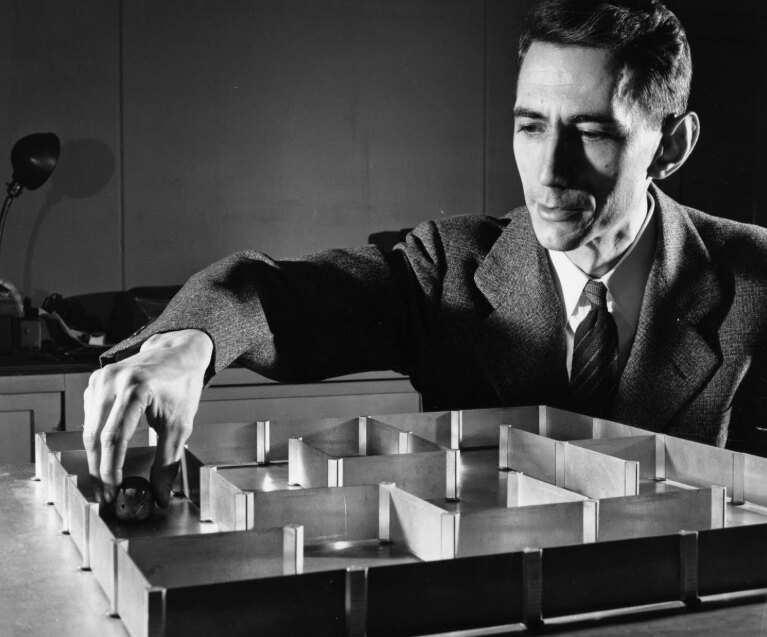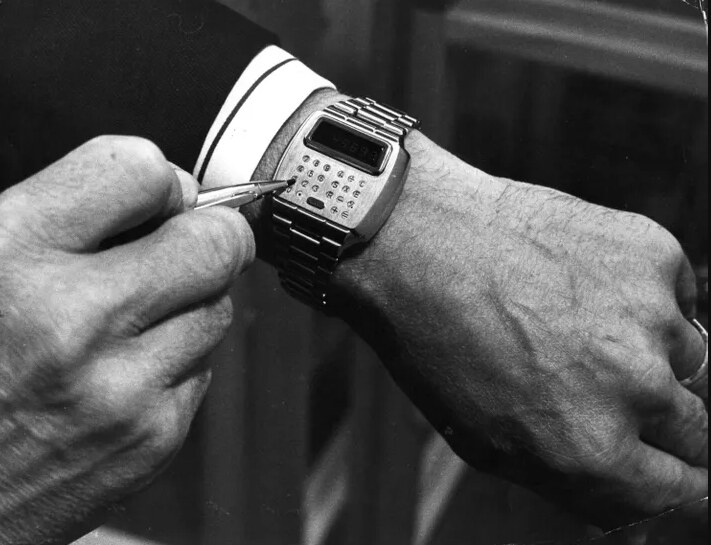Wearable technology is everywhere today, from smartwatches tracking our steps to health monitors saving lives. These devices have become essential tools for fitness, communication, and even medical care. But the history of wearable technology stretches far beyond modern gadgets, with roots going back centuries. This blog dives into the fascinating journey of wearable tech, exploring its origins, key milestones, and what lies ahead. Let’s uncover how wearable devices evolved and what the future holds.
When Was Wearable Technology Developed?
Wearable technology has been around longer than you can imagine throughout history. The very first wearable device was eyeglasses, developed in 1286 by Italian scholars and monks just so that their eyesight would be corrected. The device was so basic yet groundbreaking that it enabled people to see better with it wherever they went, a feat that signified the invention of wearable devices.
Wearable timekeeping in the 1500s arrived in the form of the pocket watch, followed by the wristwatch in the 19th century. These made it possible to carry time around, opening the door to personal, wearable technology. Wearable technology leaped forward in the middle of the 20th century with wearable computers, which integrated electronics and portability in new ways that redefined the role of technology in daily life.
Timeline of Wearable Technology Development
Wearable technology history goes back centuries, with every era witnessing newer innovations. Here follows an easy-to-grasp timeline of significant achievements in wearable history:
Early Beginnings (1200s–1800s)
-
1286: Eyeglasses were discovered, providing portable vision correction.
-
1500s–1600s: Pocket watches and early pedometers enabled time keeping and activity tracking to be portable.
-
1800s: Wristwatches were the rage, enabling timekeeping to be personal.
Rise of Wearable Computing (1960s–1980s)
-
1961: The first computer to be worn, a roulette prediction machine, was a breakthrough in wearable electronics.
-
1966: The first computer display mounted on the head started modern virtual reality.
-
1970s–1980s: Calculation watches and personal music players, such as the Walkman, brought computing and entertainment into the pocket and wrist.
Modern Wearables (2000s–2010s)
-
2000s: Simple computing integrated with watch functionality in early smartwatches.
-
2010s: Smartwatches and fitness trackers went mainstream, coming with health and activity sensors onboard.
The timeline indicates how wearable technology has evolved from mere tools to sophisticated devices that have become integrated into our lives.
Early Inventions in Wearable Technology
The first wearable technologies were practical answers to common challenges. Glasses, developed in the latter half of the 13th century, straightened vision and enhanced overall well-being. 1600 pedometers allowed individuals to monitor their steps—a step toward modern-day fitness trackers. Pocket watches and later wristwatches brought timekeeping to convenience on the go, bringing technology into the rhythm of daily life.
In 1961, the world saw a groundbreaking piece of equipment: a computer-worn wearable that would forecast roulette results. The device, the size of a cigarette pack, employed timing and computation to provide its user with an advantage in betting, illustrating the future potential of wearable electronics. In 1966, head-mounted displays brought the concept of wearable visual interfaces to the world, paving the way for virtual reality and augmented reality.
Evolution of Smartwatches and Fitness Trackers
The evolution from calculator watches to today’s smartwatches is incredible. Calculator watches introduced rudimentary computing to the wrist during the 1970s, combining form and function. The 2000s saw smartwatches with calendars and rudimentary apps, but everything changed during the 2010s.
Wearable computers, made popular by manufacturers in the early 2010s, brought health monitoring within reach. The machines tracked steps, calories, and sleep, and users could manage their health. Then came the smartwatches, further incorporating fitness tracking to notifications, apps, and connectivity. This revolution changed how humanity interacted with technology, such that it became a part of their existence.
Who Created the First Wearable Computer?

It was Edward Thorp and Claude Shannon who developed the first wearable computer in 1961, a device that was intended to forecast roulette in casinos. Small enough to put inside a shoe, the gadget used timing circuits to compute probability, providing a statistical edge to the user. Despite being utilized for a niche application, its importance was staggering.
This innovative wearable computer demonstrated that high-level calculations could be performed while being mobile, paving the way for future wearable electronic innovation. It set the stage for the nature of devices that are both processed and mobile, the nature that is central to wearable technology today.
History of Wearable Health Devices
Wearable medical technology revolutionized medicine, beginning with the Holter monitor in 1949. The portable device monitored heart activity over a period of 24 hours and enabled doctors to diagnose outside the hospital. It transformed the monitoring of patients.
Wearable health technology, as smartwatches and fitness trackers, tracks activity, sleep, and heart rate in real time. These technologies empower consumers to take control of their health and give doctors a tremendous amount of data. From monitoring blood glucose to finding abnormal heart rhythms, wearable health technology is transforming clinical and personalized care.
Wearable Technology Breakthroughs and Milestones
Wearable technology has also experienced several breakthroughs that contributed to its formation:
-
Head-Mounted Displays: Pre-cursor prototypes of head-mounted virtual reality and augmented reality sets were first created in the early 1960s.
-
Portable Music Players: The Walkman in 1979 revolutionized music portability and changed how media was consumed outside of a stationary context.
-
Sensor and GPS Advances: Sensor and GPS miniaturization in the 2000s allowed for accurate activity tracking and location-determining capabilities.
-
Nanotechnology: More recent nanotechnology advances have shrunk wearables into smaller, lighter, and more capable devices.
These achievements established a strong ecosystem, merging hardware, software, and user requirements into groundbreaking devices.
How Wearable Technology Began
Wearable tech had humble beginnings as mere tools for use. Glasses, watches, and pedometers were needed for sight, monitoring time, and monitoring movement. During the 20th century, social and technological advancements such as electronics and the computing revolution encouraged wearable evolution.
Military requirements, such as handheld communications gear, and medical requirements, such as heart monitors, initiated development early. Consumer demand for convenience and connectivity was another driver. These forces converged to form the vision of wearable computing, where technology blends into everyday life.
What Is the Future of Wearable Technology?
Wearable technology’s future is dynamic and expansive. Current trends include:
-
Augmented Reality (AR): AR glasses would superimpose virtual data onto the real world to improve work and leisure.
-
Advanced Health Monitoring: Wearables already diagnose disease at an early stage, monitor chronic disease, or even give medication.
-
AI and IoT Integration: Wearables will connect with intelligent homes and AI systems to provide personalization.
-
Augmented Humans: Ideas such as brain-computer interfaces could amplify human abilities, from memory to physical power.
Pro.pts such as cost, privacy, and battery life persist, but the innovation potential is limitless. Wearable technology will be more integrated, more sophisticated, and more impactful.
Conclusion
From glasses in the 13th century to the current smartwatches, the history of wearable technology is one of innovation and expansion. Every leap, from rudimentary watches to sophisticated health monitors, has propelled technology onto the individual. With wearable technology on the move, look for it to transform healthcare, communication, and human capacity. Continue to be amazed at what’s coming—it’s bound to change how we live and connect with the world.
FAQs
What was the first wearable technology?
Glasses were the first wearable technology created in 1286 to enhance sight, then pocket watches in the 1500s to tell time.
How have smartwatches changed over the years?
Smartwatches progressed from calculator watches during the 1970s to watches in the 2010s with fitness monitoring, reminders, and applications, as their main role became connecting and health.
What is the use of wearable health devices nowadays?
Wearable health devices track heart rate, sleep, and activity, enabling consumers to maintain wellness and giving physicians valuable information for diagnosis.
What is next for wearable technology?
The future involves augmented reality, advanced health tracking, and integration of wearables with AI as they become more reliable and stronger in everyday life.

